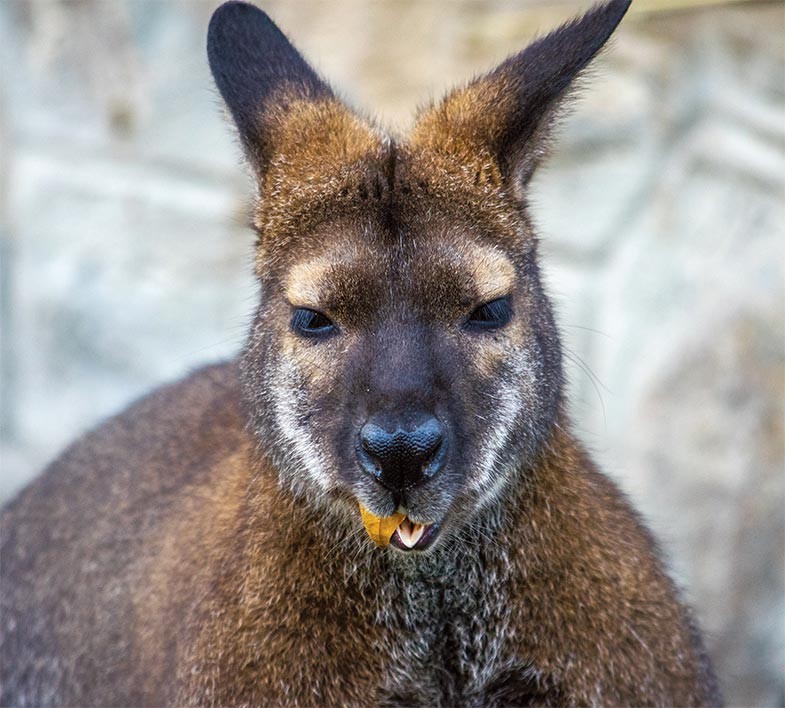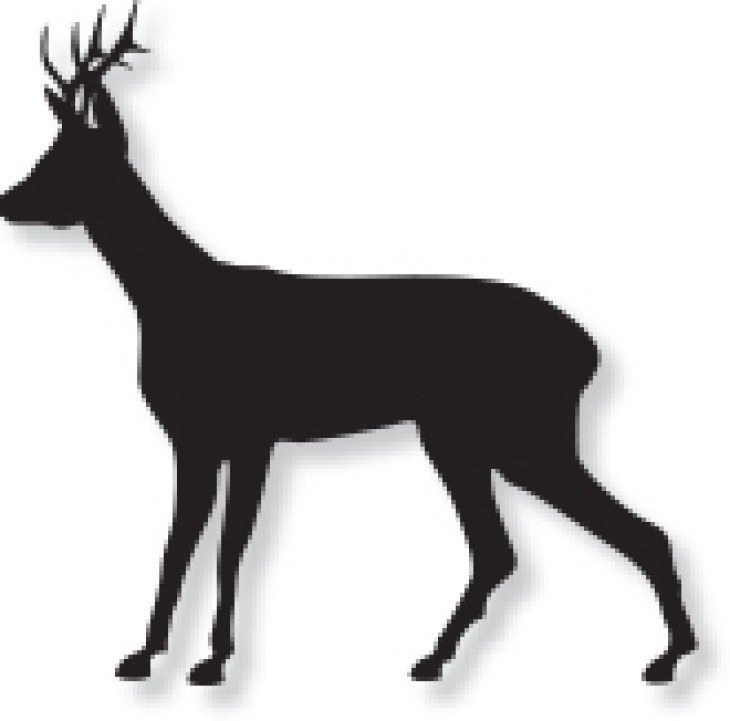Editor’s Note: What follows is the first in a series of pieces that imagines what the Northern Forest would be like if history had unfolded in a different way.
Experts estimate that there were around 30 million whitetail deer in the US in the year 1500. Over the next 300 years they were killed relentlessly by settler farmers and Native American hunters, who traded the hides to colonial merchants for provisions and promises. By 1800, that 30 million number had been cut in half.
When the natives were pushed westward, colonists learned to hunt with ruthless efficiency, motivated by urban meat markets and aided by repeating rifles and railroads that shrank the country. In the 30 years between 1860 and 1890, market hunters killed around 14 million deer, which is even more astounding if you consider that for five of those years most able-bodied men were busy trying to kill each other. By 1890 there were only about 300,000 deer left, which at the rate they were being killed was an eight-month supply.
What happened next was a remarkable and oft-celebrated story of recovery, and today we’re back to around 30 million deer. Hunting has gone from kill-as-many-as-you-can to highly regulated; it’s a tradition that is practiced with religious zeal in most rural areas of the country. While the market for wild deer meat is gone, there’s still plenty of money involved – hunting alone is a $35 billion industry nationwide. Add the money behind the deer fence industry, the deer paraphernalia industry (paintings, decorative plates, air-brushed T-shirts), the body shop business linked to collisions, and you’re soon talking crazy money. And what’s the intangible value of watching does and fawns under the apple tree in the yard? The original word for deer, dheu, meant breath. Life. They are as entwined with our lives as any wild animal I can think of.
But what if we hadn’t stopped killing them in time? What if we’d used that last bit up and, like bison, deer had become functionally extinct?
Imagine it’s 2018, and America hasn’t had a wild whitetail deer herd of any significance for a hundred years. There was talk in the 1890s of a so-called North American Wildlife Model, which would have placed game animals in the public trust. State game departments were proposed to regulate and enforce bag limits and hunting seasons. Market hunting would have been outlawed. But deer advocates lost this political battle, and a formal management structure was delayed for decades – inertia is as powerful a force in politics as it is in physics.
Without government support, the coalition advocating for deer protection went about their endeavors privately. Large chunks of the northern forest were purchased and set aside as game reserves with no public access. At first these reserves were Dr. Moreauvian hodgepodges of life – anyone with a big enough pocketbook could create their own Eden. Strangely enough, kangaroos, imported from Australia, found the region to their liking and spread like rabbits, filling the mid-size herbivore niche the deer left. They’re now a solid part of both our ecological culture and our pop culture. Fathers affectionately refer to their young sons as their little kangaroos, this from a lyric in a popular country song.
When the preserves were created it was mostly too late for the deer – the point of no-return had been reached – but the last survivors were put behind fences in the Adirondacks. They languished there – the whitetail is not an animal that takes well to domestication. They also inbred with the exotic deer on the preserves, and today the few remaining whitetails contain a percentage of foreign deer genes. New York State actively promotes its herd as a tourist attraction, and visitors still flock to the Adirondacks to see the last of the deer, but mammologists insist that the animal isn't a true whitetail anymore. Certainly pictures bear this out. The tall, narrow antlers on mature bucks are nothing like the wide-racked antecedents you see in earlier pictures of the species.
Without deer, the sport of hunting cleaved along class lines. The rich shot farm-raised game birds with fancy guns, but among regular people it remained a sustenance endeavor. When commercial agriculture developed to the point of making small game meat unnecessary for all but the poorest poor, hunting declined and became a niche pursuit. This set the stage, later in the twentieth century, for an anti-hunting political agenda to take root in urban and suburban areas.
Since the general public was never included in managing game, the conservation ethic never got much traction outside of academia. There were no hook and bullet magazines that espoused concepts of fair use, fair chase, reverence. No formal hunter-ed. And so today, it’s mostly done in a put-and-take manner, the hunting preserve sort of like a stocked bass pond. The hunting of wild animals is often done in a blunt, callous way. It’s not uncommon to hear guns on summer nights in rural areas as people pot-shoot songbirds.
Moose found pockets of refuge from market hunters in northern Canada, and over time came back to the Northeast in a big way. With no whitetails there was no brain worm to contend with, so they quickly spread throughout the region. That means that on private forestland they are aggressively culled; companies of snipers keep populations negligible. The better-run timber companies sell cans of moose meat on the open market as a non-timber forest product. But on public lands, and large private ecological reserves, and even in suburban central New England, moose flourished in the mid-twentieth century. In some areas they enjoyed cult status – sort of like cows in India. Traffic still backs up on the Mass Pike as motorists swerve around moose who stand in the middle of the road and lap salt. It's illegal in that state to even look at them funny if they’re on public land.
Unfortunately, moose have been declining in the region since the 1970s due to climate change, which progressed more rapidly in our world without deer. Protecting deer a century earlier would have given people a model for how sensible government regulation can be a force for good; without that model, significant environmental legislation never came to pass. Dirty air continues to plague the Northeast; there hasn't been a brook trout in a mountain pond in half a century. Europe considers us to be hippy-dippy in our notions of animal rights, but at the same time we have a tolerance for industrial environmental abuse that makes the Chinese wonder how we can live like that. Without deer in the suburbs to remind people of real nature, a bond was broken.
Much of the Northeast is literally abuzz with its thriving timber industry, and our choice hardwood is the envy of the world. Without deer pressure, maple, oak, and cherry flourish in their respective niches. Every spring the forest floor is carpeted in wild flowers of every shape and color – you’d think you were in an alpine meadow. There’s a substantial wild ginseng industry – the Northeast surpassed Appalachia in that regard as the climate warmed.
You might think there’s no Lyme disease, but the ticks just started using the kangaroos like they use deer, so that’s still balls.
The urge to hunt is entwined in human DNA, so lacking big game, people turned to mushrooms. Pull into a rural gas station and you’ll see toadstool decals on the back window of every pickup truck. A variety of hunting techniques are employed everywhere, but you can make some regional generalizations. In the big north woods people tend to hunt solo and cover lots of miles – you can learn more about this by reading the book: Big Boletes the Benoit Way, the Benoits being a semi-famous family of foragers who made literary hay in the 1990s with their hunting stories and pictures of sagging porcini poles. In southern areas mushroom drives are big, and whole families beat the brush in skirmish lines. Some guys hound, but it’s looked down on by purists as cheating. In some states baiting is legal, and you’ll often find shroom stands overlooking big piles of sawdust.
Since there was no deer camp in the middle 20th century, there were no deer camp widows to populate the malls when their husbands disappeared for a month each fall. Thus the commercialization of Christmas never happened. The holiday is practiced today by Christians, but gift giving is modest.
There’s a lot of concern among sociologists about skyrocketing divorce rates in rural areas, and a lot of theories about the driver. Some fascinating research compared divorce rates in the rural US, where there is no deer camp culture, with regions of rural Canada where hunting camp culture does exist and divorce is rarely practiced. The researchers speculate that all that time away from your domestic partner actually helps a marriage – absence making the heart grow fonder. The findings did not make it into the popular press.




Discussion *